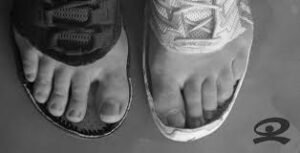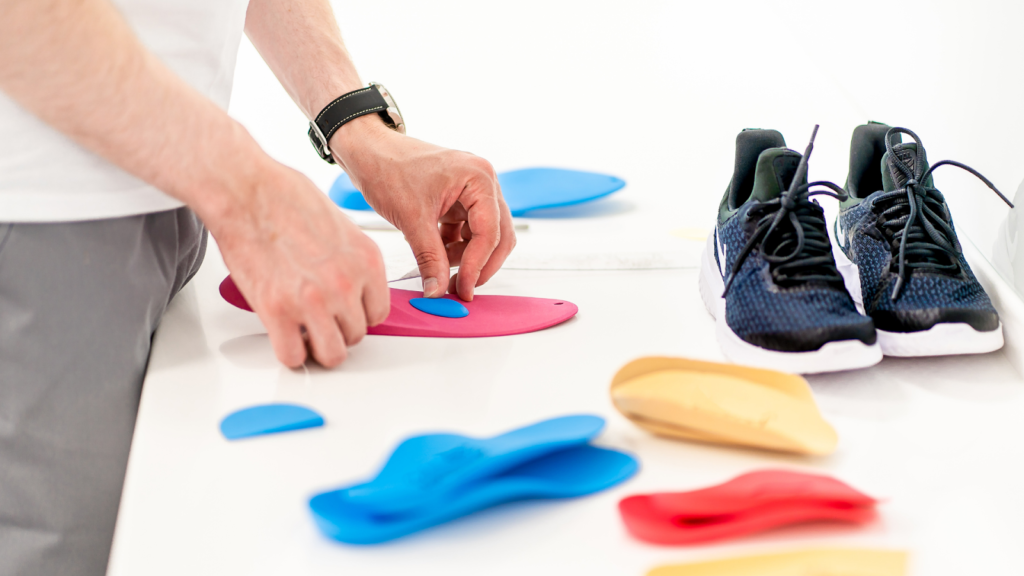Have you ever wondered what “esfeet meaning” really is? It’s more than just a fancy word—it’s a doorway into a world of languages, histories, and how people understand things. Let’s explore what makes esfeet meaning so interesting and important.

What Does “Esfeet Meaning” Actually Mean
When we talk about “esfeet meaning,” we’re diving into the idea of what something really means. It’s like asking, “What’s the story behind this word?” Every word has a history and a story. Esfeet is one of those words that has a deep, hidden story. It’s not just about its letters; it’s about where it came from and how people use it.
Esfeet, when you hear it, might sound strange at first. That’s because it’s not a word we use every day. But it has a secret power—it connects people through language and culture. In some places, esfeet might mean something totally different than what you expect. That’s the beauty of language—it changes and grows with the people who use it.
When you understand esfeet meaning, you’re understanding more than just a word. You’re understanding a piece of history and a way people express themselves. It’s like learning a secret code that unlocks new worlds of understanding. So, next time you hear “esfeet,” remember, it’s more than just a word—it’s a key to a whole new world of meanings.
The Story Behind Esfeet: Where Did It Come From
Have you ever wondered where words come from? Esfeet has a story that stretches back through time. It’s like a treasure hunt, finding clues in old languages and ancient cultures. The word esfeet has its roots in different places, like Spanish and other old languages. It traveled through time, changing a little here and there, until it became the word we know today.
Imagine people long ago, sitting around fires and talking. They used esfeet to describe something important to them. Maybe it was about walking or footsteps, or maybe it meant something deeper, like a journey through life. As languages mixed and people traded ideas, esfeet traveled across countries and continents, carrying stories and meanings with it.
Today, when we say esfeet, we’re not just saying a word—we’re carrying on a tradition of sharing stories and understanding each other. It’s a reminder that words are like time travelers, connecting us to our past and shaping our future. So, the next time you hear esfeet, think about where it’s been and where it might go next.
Why Understanding Esfeet Meaning Matters
Understanding esfeet meaning is like understanding a secret language that everyone uses without even realizing it. It’s about more than just knowing what the word means—it’s about understanding the people who use it and why. When we understand esfeet, we understand a little bit more about how people see the world around them.
Esfeet meaning matters because it’s a bridge between different cultures and ways of thinking. It helps us see similarities and differences in how people live their lives. For example, in some cultures, esfeet might symbolize luck or prosperity, while in others, it could mean something completely different, like a way to show respect or tradition.
When we take the time to understand esfeet meaning, we’re opening ourselves up to new ideas and perspectives. We’re learning to appreciate the richness of language and the diversity of human experience. So, the next time you come across esfeet in conversation or in a book, take a moment to think about what it might mean to the person who’s using it.
What Exactly is Esfeet
When people talk about “esfeet,” they’re diving into a world beyond just a word. It’s a way to describe things related to feet—like how they work or the problems they might have. Imagine walking and feeling pain in your feet. That’s something esfeet can help explain.
Esfeet can also be a tricky word in games like crosswords. It challenges people to think and figure out its meaning. Sometimes, words like esfeet are used to test how well someone knows their language.
Learning about esfeet can open a door to a new world. It shows you how words are connected to our bodies and our everyday lives. So, next time you hear “esfeet,” remember it’s more than just a word—it’s a way to understand your feet better.
The Journey of Esfeet: Where Did It Come From
Every word has a story, and esfeet is no different. It has traveled through time and different languages to become what it is today. Long ago, people used esfeet to talk about walking or the way feet are shaped. It was a word that helped them describe everyday things.
As languages changed and people traveled and traded ideas, esfeet traveled with them. It became a part of different cultures and took on new meanings. For some, esfeet became a symbol of luck or health. For others, it was about tradition and stories passed down through generations.
Understanding where esfeet came from helps us understand how people lived long ago. It’s like looking through a window into history and seeing how words shaped their lives. So, when you hear or read about esfeet, think about all the places it’s been and the stories it holds.

Why Knowing About Esfeet Matters
Knowing about esfeet isn’t just about learning a word—it’s about understanding our bodies and how we communicate. Our feet are important because they help us walk, run, and move around. When we learn about esfeet, we learn about how to take care of our feet and keep them healthy.
Esfeet can also teach us about different cultures and how they see the world. In some places, feet are seen as a symbol of respect or tradition. Learning these things helps us respect and understand people who might be different from us.
So, next time you hear the word esfeet, think about all the things it can teach us. It’s not just a word—it’s a way to learn about language, history, and how we connect with each other.
Exploring Esfeet Across Cultures
Esfeet isn’t just a word; it’s a bridge between different cultures and traditions. In some places, esfeet means more than just feet—it can symbolize luck, health, or even respect. Each culture has its own way of using esfeet, which shows how language connects us all.
For example, in some cultures, people believe that taking care of their feet is important for their overall well-being. They use special rituals or treatments to keep their feet healthy. In other cultures, esfeet might be a way to show respect to elders or guests by washing their feet or offering them special shoes.
Learning about esfeet across cultures helps us appreciate diversity and understand how people see the world differently. It’s like learning a new language that doesn’t use words—it uses actions and beliefs instead. So, when you hear about esfeet in different cultures, think about the stories and meanings behind it. It’s not just about feet; it’s about the people and their traditions.
The Science Behind Esfeet and Health
Esfeet isn’t just about words and meanings; it’s also about our bodies and how they work. Our feet are incredibly important because they help us balance, walk, and run. When we learn about esfeet, we learn about how to take care of our feet and keep them healthy.
Scientists study esfeet to understand how feet work and how they affect our health. They look at things like foot structure, how we walk, and even how shoes can help or hurt our feet. For example, wearing shoes that don’t fit well can cause problems like blisters or sore feet.
Understanding the science behind esfeet helps us make smart choices about our health. It teaches us how to pick the right shoes, take care of our feet, and even prevent problems like foot pain or injuries. So, next time you hear about esfeet in a scientific way, think about all the ways it can help us stay healthy and strong.
Esfeet in Everyday Life: Practical Tips
Esfeet isn’t just a word we learn about—it’s something we use every day. Taking care of our feet is important because it helps us stay active and healthy. When we know about esfeet, we can do things to keep our feet feeling good.
Here are some practical tips for taking care of your feet:
- Wear shoes that fit well and support your feet.
- Wash your feet every day and dry them carefully, especially between your toes.
- Keep your toenails trimmed and clean to prevent problems like ingrown toenails.
- Stretch your feet and legs to keep them flexible and strong.
- If your feet hurt, rest them and put ice on any sore spots to help them feel better.
Esfeet and Cultural Traditions
Esfeet isn’t just about feet—it’s also about traditions and beliefs passed down through generations. Different cultures have their own ways of using esfeet in rituals or celebrations. For example, in some cultures, people believe that certain foot treatments or massages can bring good luck or health.
Understanding esfeet in cultural traditions helps us respect and appreciate different ways of seeing the world. It shows us how people from different backgrounds use words and actions to connect with their history and beliefs. So, when you learn about esfeet in cultural contexts, think about the stories and meanings behind the practices.
The Impact of Esfeet on Daily Life
Esfeet isn’t just a word we hear or read about—it’s something that affects our daily lives. Our feet are important because they help us move, play, and do things we enjoy. When we learn about esfeet, we learn about how to take care of our feet and keep them healthy.
Esfeet can also impact how we feel about ourselves. If our feet hurt or feel uncomfortable, it can affect our mood and how we interact with others. By understanding esfeet, we can make choices that help us feel good and stay active.
For example, wearing comfortable shoes and practicing good foot hygiene can make a big difference in how our feet feel. Taking breaks to stretch our feet and legs can also help prevent problems like stiffness or soreness.
Esfeet in Art and Literature
Esfeet isn’t just a topic for science or health—it’s also something that inspires artists and writers. In art and literature, esfeet can be a symbol of strength, beauty, or even a way to tell stories about life and culture.
For example, in paintings or sculptures, esfeet might be used to show movement or emotion. Artists might use esfeet to create images that capture the feeling of walking or dancing. In stories and poems, esfeet can be a metaphor for journeys or struggles.
Understanding esfeet in art and literature helps us see how words and images can come together to create meaning. It shows us how artists and writers use their creativity to express ideas and emotions. So, next time you see esfeet in art or literature, think about the stories it tells and the feelings it evokes.
Esfeet and Modern Technology
Esfeet isn’t just about history or culture—it’s also something that evolves with modern technology. Today, scientists and engineers use technology to study esfeet and create new ways to keep them healthy and strong.
For example, there are now special shoes and insoles designed to support different types of feet and reduce problems like pain or discomfort. There are also apps and devices that can track how we walk and give us tips to improve our foot health.
Understanding esfeet in modern technology helps us see how innovation can make a difference in our lives. It shows us how science and creativity come together to solve problems and improve our well-being. So, when you hear about esfeet in relation to technology, think about all the ways it can help us live healthier and happier lives.

Conclusion
esfeet is more than just a word about feet—it’s a way to understand our bodies, cultures, and everyday lives. Learning about esfeet teaches us how to take care of our feet and keep them healthy. It also shows us how words can connect us to different traditions and beliefs from around the world.
Esfeet is like a puzzle piece that fits into many parts of our lives. Whether we’re talking about science, art, or daily routines, esfeet helps us see how everything is connected. So, the next time you hear the word esfeet, remember that it’s not just about feet—it’s about exploring the world around us and learning new things every day.





More Stories
Discover Amazing Tech Tips at tha techno tricks.com: Your Guide to the Latest in Technology
Understanding Juwai Teer: A Fun Lottery Game in Meghalaya
Kuromi:_s_qsoenxpk= HelloKitty: A Friendship of Mischief and Sweetness